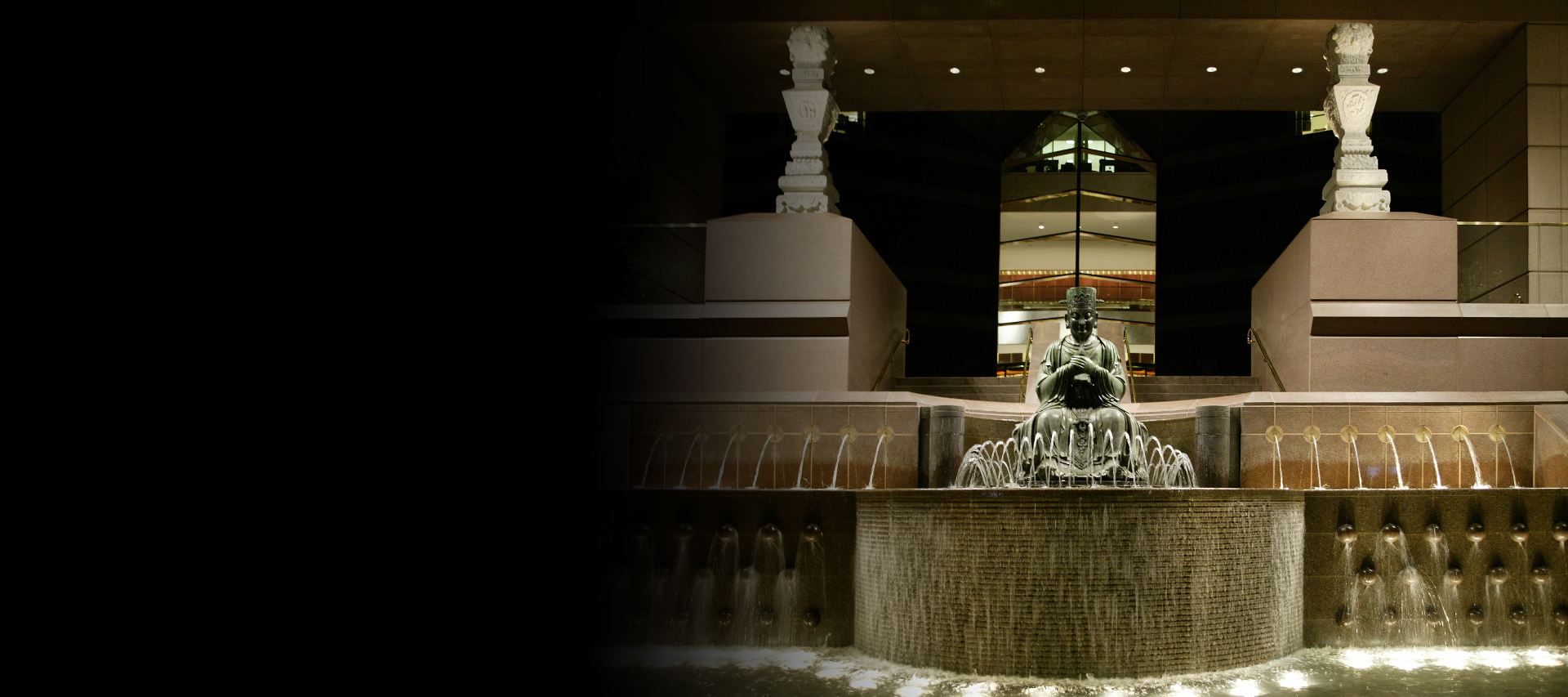
Artist: B.G. Sharma (1924-2007)
Culture/Country: India Period: 20th century
Medium: Opaque watercolor on ivory
Dimensions: 6.5 x 4.5 in.
Collection TItle: Collection of Henry Flood Schoellkopf, Washington, DC
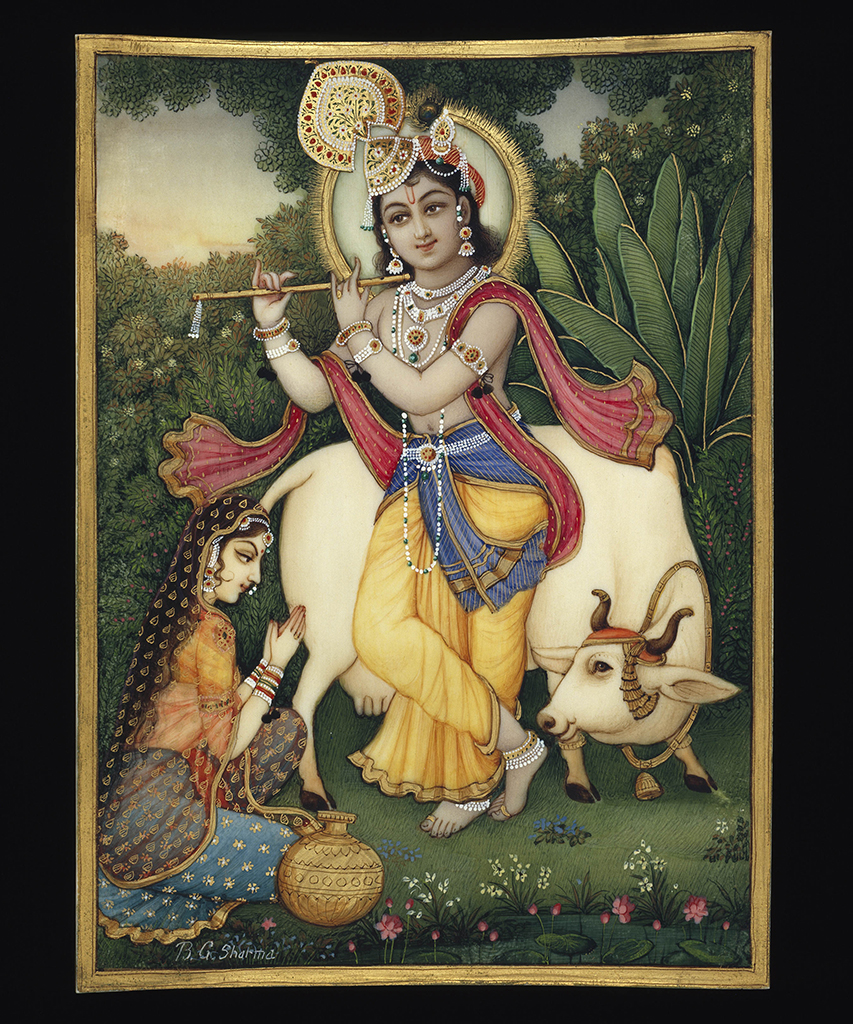
Artist: B.G. Sharma (1924-2007)
Culture/Country: India
Period: 20th century
Medium: Opaque watercolor and gold on ivory
Dimensions: 6.5 x 4.5 in.
Collection Title: Collection of Henry Flood Schoellkopf, Washington, DC
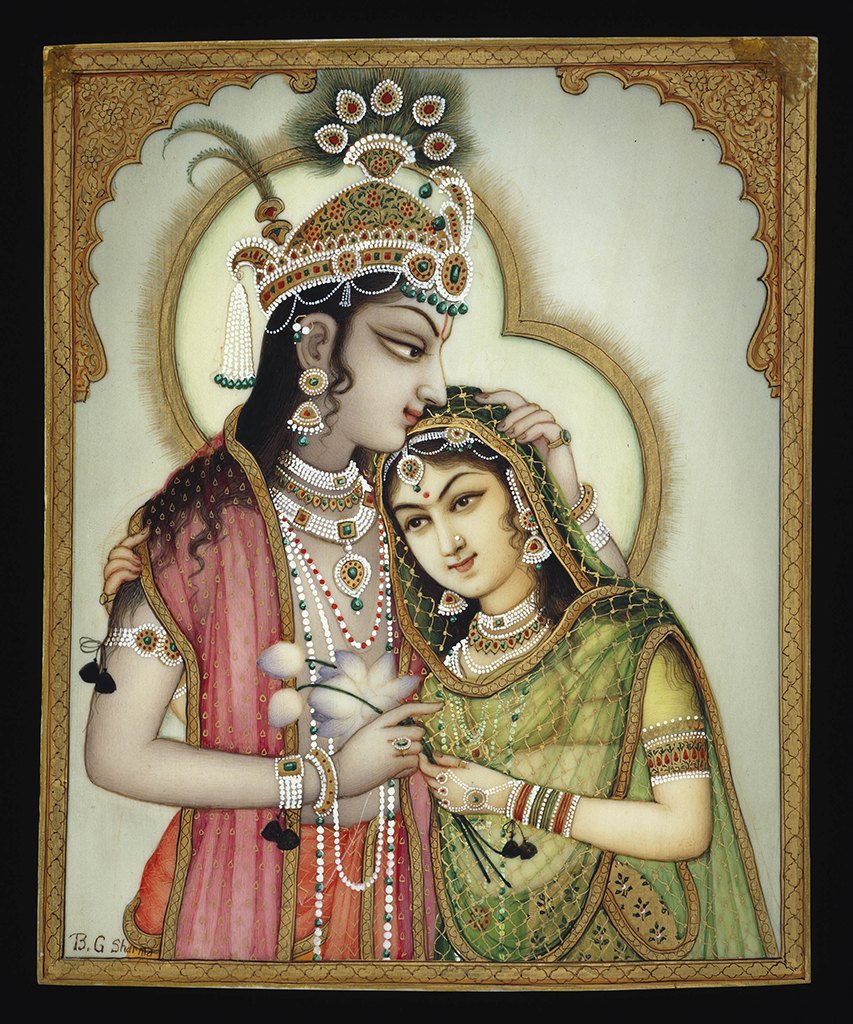
Artist: B.G. Sharma (1924-2007)
Culture/Country: India
Period: 20th century
Medium: Opaque watercolor on ivory
Dimensions: 6.5 x 4.5 in.
Collection Title: Collection of Henry Flood Schoellkopf, Washington, DC
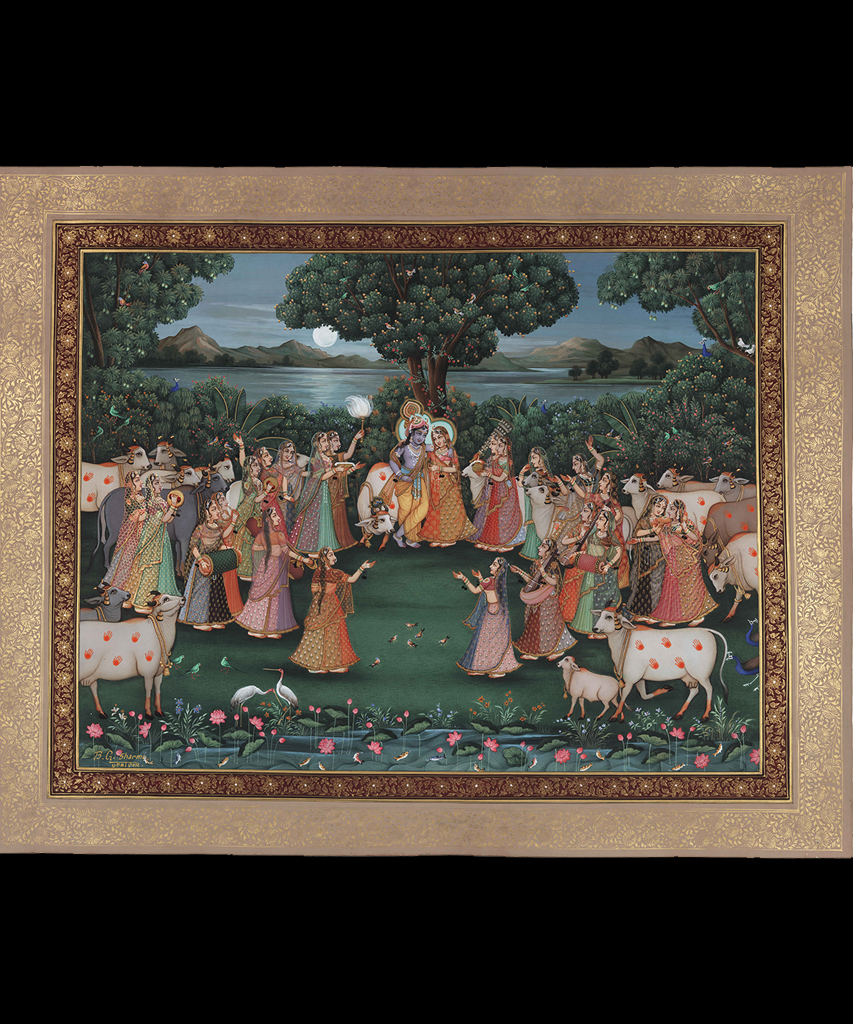
Artist: B.G. Sharma (1924-2007)
Culture/Country: India
Period: 20th century
Medium: Opaque watercolor on board, gold and silver on cotton and jute board
Dimensions: 18 x 22 in.
Collection Title: Collection of Henry Flood Schoellkopf, Washington, DC
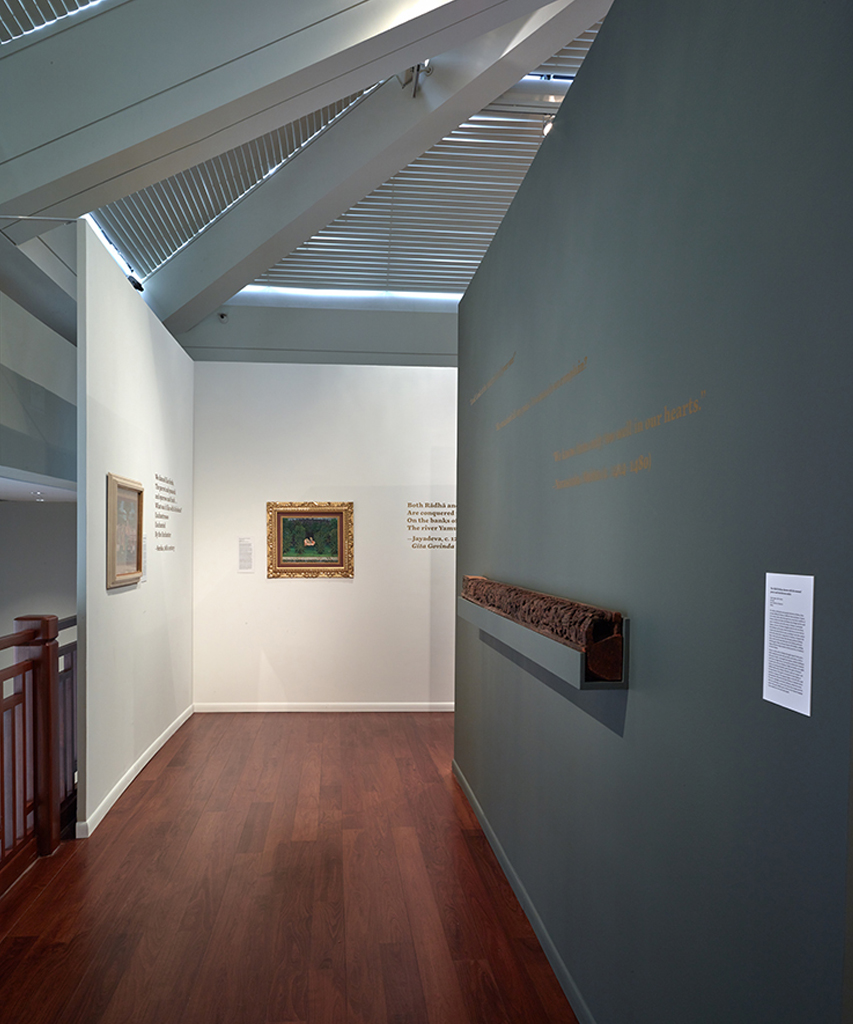
Sweetness without a tinge of irony is out of fashion. Distance from sweetness is more often invoked as a measure of difference between high and low taste. Sweetness, however, is central to the work of B. G. (Banwarhlal Giridharlal) Sharma, whether in his designs for commercially produced prints, which dominated the Hindu market in the second half of the 20th century, or in his finely painted works in precious mineral colors on cloth, paper, or ivory. His painted works, Catholic in subject, were individually signed and sold or presented on behalf of the Indian government to international dignitaries.
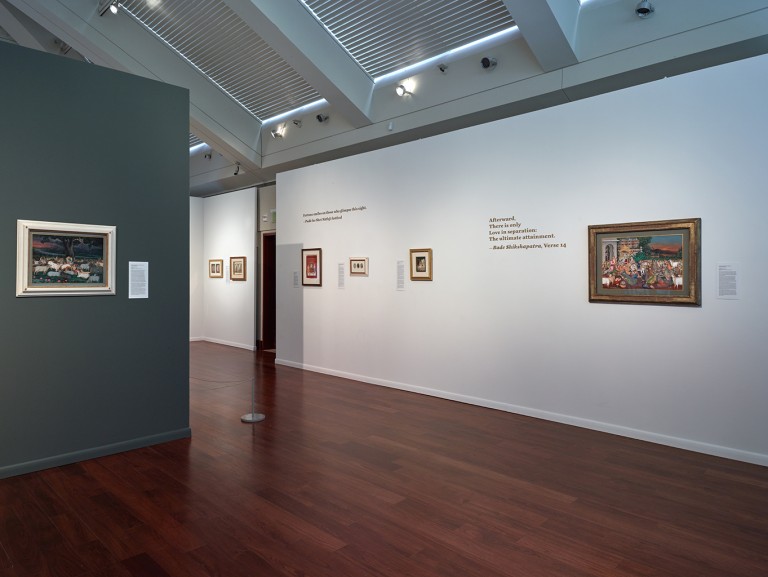
When Sharma’s subject is the “Eternally Sweet” Hindu god Krishna, as in the paintings and prints gathered for this exhibition, the full colors of his talent and conviction are on display.
These are pictures that rest on ethics of long cultivation and refinement and address sense awareness with a sophisticated understanding of human nature.
This exhibition proposes that visitors set aside habits of viewing that resist sweetness with labels such as “kitsch,” or dismiss pictures that tug at sentiment as invasive. These are pictures that rest on ethics of long cultivation and refinement and address sense awareness with a sophisticated understanding of human nature. They seduce with friendly but frank eroticism. They demand to be looked at, to be communicated with, and to be indulged by our reason.
Compositions ask for acceptance of an amalgam of conventions, and images make use of “realistic” tools—shading, perspective, light shining from eyes that directly engage ours—to portray figures of mythic dimensions, impossible perfections. We are asked to feel sweetness as real, to perform it through visual acceptance, and to give it in return.
This approach to Sharma’s work is guided in this exhibition through texts that accompany each image and are drawn from the rich literature—puranas, poetry, songs, and prayers—sustaining Krishna worship in many languages. This textual material will touch upon the Krishna story or theater (lila) of his human lifetime, the way of life followed by devotees of Krishna known as Pushti Marg, or “Path of Grace,” and the cults around charismatic poet-saints who established the practice of bhakti, or devotion, to Krishna in the sacred region of Braj, described in many of the pictures on view. On this path, access to Krishna is obtained through mutual auspicious looking (darshan) enacted with votive paintings and sculptures and performed through various relationships with images such as those on view.
With reflection on this context, sweetness reclaims flavors of dimensions where it is embraced. Sharma’s depictions of Krishna’s chaste seductions of the cowherd girls, care and love of cows and kin, deep mutual bond with Radha, and honor to duty offer Krishna not as stolen candy but as sweet milk. It is this first nourishment, the promise of joy, and even as license for dessert, that answers to the fundamental human cravings for friendship, acceptance, mother-child joy, protection, communal bonds, love, and rhythms of satisfaction in patterns of everyday life. They are an art addressed to the divine that is human.
The twenty Sharma paintings included in the exhibition are on loan from collector and philanthropist Henry Flood Schoellkopf, who obtained them from the artist. The prints are drawn from the collections of pioneers in this field, Marc Baron and Elise Boisanté, and the Richard Davis Archive at Bard College.
Sri Sri Radha Kalachandji Mandir Hare Krishna Temple is a community partner of this exhibition.
